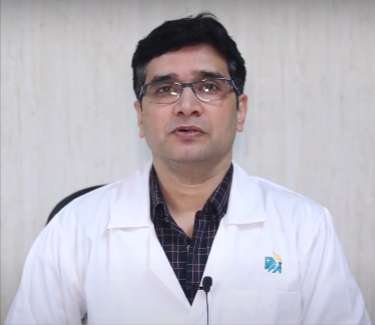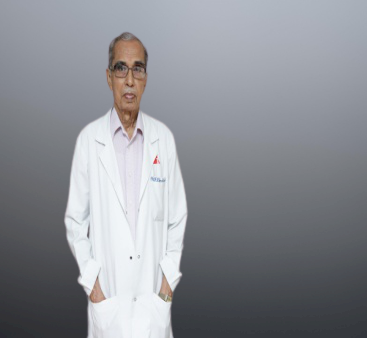Could not find what you are looking for?
- Treatments & Procedures
- Abdominoplasty (Tummy Tuck) - Types, Procedure, Cost In India, Risks, Recovery and Benefits
Abdominoplasty (Tummy Tuck) - Types, Procedure, Cost in India, Risks, Recovery and benefits
Best Hospital for Abdominoplasty (Tummy Tuck) in India
What is Abdominoplasty (Tummy Tuck)?
Abdominoplasty, commonly known as a tummy tuck, is a surgical procedure designed to improve the appearance of the abdomen. This cosmetic surgery involves the removal of excess skin and fat from the abdominal area, as well as the tightening of the underlying muscles. The primary goal of abdominoplasty is to create a flatter, firmer abdominal profile, which can significantly enhance a person's self-esteem and body image.
The procedure is particularly beneficial for individuals who have experienced significant weight loss, pregnancy, or aging, all of which can lead to loose skin and weakened abdominal muscles. During the surgery, a surgeon makes an incision across the lower abdomen, removes the excess skin and fat, and then tightens the abdominal muscles by suturing them together. The remaining skin is then pulled down and stitched into place, resulting in a smoother and more contoured abdomen.
Abdominoplasty is not a weight-loss procedure; rather, it is intended for individuals who are close to their ideal weight but struggle with stubborn fat deposits or loose skin that do not respond to diet and exercise. It is essential for potential candidates to have realistic expectations about the outcomes of the surgery, as well as a clear understanding of the recovery process involved.
Why is Abdominoplasty (Tummy Tuck) Done?
Abdominoplasty is typically recommended for individuals who are dissatisfied with the appearance of their abdomen due to various factors. The most common reasons for seeking this procedure include:
- Post-Pregnancy Changes: Many women experience significant changes in their bodies after pregnancy, including stretched abdominal muscles and excess skin. A tummy tuck can help restore the abdominal area to its pre-pregnancy state.
- Significant Weight Loss: Individuals who have lost a substantial amount of weight, whether through diet, exercise, or bariatric surgery, often find that they have excess skin that hangs around the abdomen. Abdominoplasty can remove this excess skin and improve body contours.
- Aging: As people age, their skin loses elasticity, which can lead to sagging and a less toned appearance. A tummy tuck can help counteract these effects and provide a more youthful look.
- Genetics: Some individuals may be genetically predisposed to store fat in the abdominal area or have loose skin, making it difficult to achieve a flat stomach through traditional means.
- Physical Discomfort: In some cases, excess skin can cause physical discomfort, such as chafing or irritation. Removing this skin can alleviate these issues and improve overall comfort.
Abdominoplasty is often recommended when other methods of body contouring, such as diet and exercise, have not yielded the desired results. It is essential for individuals considering this procedure to consult with a qualified plastic surgeon to discuss their goals and determine if they are suitable candidates for surgery.
Indications for Abdominoplasty (Tummy Tuck)
Several clinical situations and factors can indicate that a patient may be a good candidate for abdominoplasty. These include:
- Excess Skin and Fat: Patients with significant amounts of loose skin and fat in the abdominal area are prime candidates for a tummy tuck. This is often seen in individuals who have undergone major weight loss or women who have had multiple pregnancies.
- Weak Abdominal Muscles: A common indication for abdominoplasty is the presence of diastasis recti, a condition where the abdominal muscles have separated, often due to pregnancy or obesity. This separation can lead to a protruding abdomen, which can be corrected through muscle tightening during the procedure.
- Stable Weight: Candidates for abdominoplasty should ideally be at or near their target weight. Significant fluctuations in weight after the procedure can compromise the results and lead to the return of excess skin or fat.
- Non-Smoker: Smoking can impede the healing process and increase the risk of complications during and after surgery. Patients are typically advised to quit smoking several weeks before the procedure and remain smoke-free during recovery.
- Good Overall Health: Candidates should be in good overall health, without any underlying medical conditions that could complicate surgery or recovery. A thorough medical evaluation is often conducted to ensure that patients are fit for the procedure.
- Realistic Expectations: It is crucial for candidates to have realistic expectations about the outcomes of abdominoplasty. While the procedure can significantly improve the appearance of the abdomen, it is not a substitute for a healthy lifestyle or a weight-loss solution.
- Psychological Readiness: Candidates should also be psychologically prepared for the changes that come with surgery. This includes understanding the recovery process and being ready to commit to post-operative care.
In summary, abdominoplasty is indicated for individuals who have excess skin and fat in the abdominal area, weakened abdominal muscles, and are in good health with stable weight. A thorough consultation with a qualified plastic surgeon can help determine if this procedure is the right choice for achieving a flatter, more toned abdomen.
Types of Abdominoplasty (Tummy Tuck)
Abdominoplasty can be performed using various techniques, each tailored to meet the specific needs of the patient. The most common types of abdominoplasty include:
- Full Abdominoplasty: This is the most comprehensive type of tummy tuck, involving a long incision from hip to hip. It allows for the removal of a significant amount of excess skin and fat, as well as the tightening of the abdominal muscles. This technique is ideal for individuals with substantial skin laxity and those who have undergone significant weight loss or multiple pregnancies.
- Mini Abdominoplasty: A mini tummy tuck is a less invasive option that focuses on the lower abdomen. It involves a shorter incision and is suitable for individuals with minimal excess skin and fat. This technique is often recommended for patients who have a small amount of sagging skin and do not require extensive muscle tightening.
- Extended Abdominoplasty: This technique is similar to a full abdominoplasty but extends the incision around the sides of the body to address excess skin in the flanks. It is often recommended for individuals who have lost a significant amount of weight and have skin laxity in both the abdomen and the sides.
- Circumferential Abdominoplasty: Also known as a body lift, this procedure involves a circumferential incision around the body, allowing for the removal of excess skin from the abdomen, hips, and back. It is typically performed on patients who have undergone massive weight loss and have significant skin laxity in multiple areas.
- Endoscopic Abdominoplasty: This is a minimally invasive technique that uses small incisions and an endoscope to tighten the abdominal muscles. It is suitable for patients with minimal excess skin and is often combined with liposuction for optimal results.
Each type of abdominoplasty has its own set of benefits and considerations, and the choice of technique will depend on the individual's specific needs, goals, and the extent of skin laxity. A thorough consultation with a qualified plastic surgeon can help determine the most appropriate approach for achieving the desired results.
In conclusion, abdominoplasty (tummy tuck) is a transformative procedure that can significantly enhance the appearance of the abdomen. Understanding the purpose, indications, and types of this surgery is crucial for anyone considering this option. With the right information and guidance, patients can make informed decisions about their body and embark on a journey toward improved self-confidence and body image.
Contraindications for Abdominoplasty (Tummy Tuck)
While abdominoplasty, commonly known as a tummy tuck, can be a transformative procedure for many individuals, it is not suitable for everyone. Understanding the contraindications is crucial for ensuring patient safety and achieving optimal results. Here are some conditions and factors that may make a patient unsuitable for abdominoplasty:
- Obesity: Patients with a body mass index (BMI) over 30 are generally advised against undergoing a tummy tuck. Excess weight can complicate the surgery and increase the risk of complications.
- Smoking: Smoking significantly impairs healing and increases the risk of complications such as infection and poor wound healing. Patients are typically required to quit smoking several weeks before and after the procedure.
- Chronic Health Conditions: Individuals with chronic health issues such as diabetes, heart disease, or autoimmune disorders may face increased risks during and after surgery. A thorough medical evaluation is necessary to assess overall health.
- Pregnancy: Women who are planning to become pregnant in the future should postpone a tummy tuck. Future pregnancies can stretch the abdominal skin and muscles, negating the results of the surgery.
- Unrealistic Expectations: Patients who have unrealistic expectations about the outcomes of the surgery may not be suitable candidates. A thorough consultation with a qualified surgeon can help set realistic goals.
- Infection or Skin Conditions: Active infections or skin conditions in the abdominal area can complicate the surgery and increase the risk of complications. These conditions should be resolved before considering a tummy tuck.
- Blood Clotting Disorders: Patients with conditions that affect blood clotting may be at higher risk for complications such as deep vein thrombosis (DVT) and should be evaluated carefully.
- Previous Abdominal Surgeries: Individuals who have had multiple abdominal surgeries may have scar tissue that complicates the procedure. A detailed surgical history is essential for assessing suitability.
- Age Considerations: While age alone is not a contraindication, older patients may have a higher risk of complications. A thorough evaluation of overall health and skin elasticity is necessary.
- Mental Health Issues: Patients with untreated mental health conditions may not be suitable candidates. A psychological evaluation may be recommended to ensure emotional readiness for surgery.
How to Prepare for Abdominoplasty (Tummy Tuck)
Preparing for a tummy tuck involves several important steps to ensure a smooth procedure and recovery. Here's how to get ready:
- Consultation with a Surgeon: The first step is to schedule a consultation with a board-certified plastic surgeon. During this appointment, discuss your goals, medical history, and any concerns you may have.
- Medical Evaluation: Your surgeon may require a complete medical evaluation, including blood tests and a review of your medical history. This helps identify any potential risks.
- Stop Smoking: If you smoke, it's crucial to quit at least four to six weeks before the surgery. Smoking can significantly impair healing and increase the risk of complications.
- Medications and Supplements: Inform your surgeon about all medications and supplements you are taking. Certain medications, such as blood thinners and anti-inflammatory drugs, may need to be stopped before surgery.
- Weight Management: If you are overweight, your surgeon may recommend a weight loss plan to help you reach a healthier BMI before the procedure. This can improve surgical outcomes.
- Arrange for Help: Plan for someone to assist you during the first few days of recovery. You may need help with daily activities, especially if you have young children or a demanding job.
- Prepare Your Home: Create a comfortable recovery space at home. Stock up on supplies, including comfortable clothing, medications, and healthy snacks. Make sure your living area is free of hazards to prevent falls.
- Follow Pre-Operative Instructions: Your surgeon will provide specific instructions to follow in the days leading up to the surgery. This may include dietary restrictions and guidelines for the night before the procedure.
- Plan for Recovery: Set aside time for recovery. Most patients need at least two weeks off work, depending on the nature of their job. Make arrangements for any necessary time off.
- Mental Preparation: Take time to mentally prepare for the changes that will come with the surgery. Consider joining support groups or speaking with others who have undergone the procedure.
Abdominoplasty (Tummy Tuck): Step-by-Step Procedure
Understanding the tummy tuck procedure can help alleviate any anxiety you may have. Here's a step-by-step overview of what to expect before, during, and after the surgery:
- Before the Procedure: On the day of surgery, you will arrive at the surgical facility. You will be greeted by the surgical team, and your surgeon will review the procedure with you. You will be asked to change into a surgical gown, and an intravenous (IV) line will be placed for anesthesia.
- Anesthesia: The procedure typically begins with the administration of anesthesia. Most tummy tucks are performed under general anesthesia, meaning you will be asleep during the surgery. In some cases, local anesthesia with sedation may be used.
- Incision: Once you are under anesthesia, the surgeon will make an incision across the lower abdomen, usually from hip to hip. The length of the incision will depend on the amount of excess skin to be removed. In some cases, a second incision around the navel may be necessary.
- Muscle Repair: After making the incision, the surgeon will lift the skin and tighten the underlying abdominal muscles. This step is crucial for achieving a flatter and firmer abdomen.
- Excess Skin Removal: The surgeon will remove any excess skin and fat from the abdominal area. This helps to create a smoother contour and improve the overall appearance of the abdomen.
- Repositioning the Navel: If necessary, the surgeon will reposition the navel to ensure it looks natural after the excess skin is removed.
- Closing the Incision: Once the desired results are achieved, the surgeon will carefully close the incisions using sutures. In some cases, drains may be placed to help remove excess fluid during the initial healing phase.
- Recovery Room: After the procedure, you will be taken to a recovery room where medical staff will monitor you as you wake up from anesthesia. You may feel groggy and experience some discomfort, which can be managed with medication.
- Post-Operative Care: Once you are stable, you may be discharged to go home. You will receive detailed post-operative care instructions, including how to care for your incisions, manage pain, and when to follow up with your surgeon.
- Follow-Up Appointments: It's important to attend all follow-up appointments to monitor your healing progress. Your surgeon will check your incisions, remove any stitches if necessary, and address any concerns you may have.
Risks and Complications of Abdominoplasty (Tummy Tuck)
Like any surgical procedure, abdominoplasty carries certain risks and potential complications. While many patients experience successful outcomes, it's essential to be aware of both common and rare risks associated with the surgery:
Common Risks:
- Infection: As with any surgery, there is a risk of infection at the incision site. Following post-operative care instructions can help minimize this risk.
- Scarring: All surgical procedures result in some degree of scarring. The surgeon will make efforts to place incisions in less visible areas, but scars may still be noticeable.
- Bleeding: Some bleeding is expected after surgery, but excessive bleeding may require additional treatment.
- Swelling and Bruising: Swelling and bruising are common after a tummy tuck and can take several weeks to subside.
- Pain and Discomfort: Patients may experience pain and discomfort during the recovery period, which can be managed with prescribed medications.
Rare Risks:
- Blood Clots: There is a risk of developing blood clots in the legs (deep vein thrombosis) or lungs (pulmonary embolism), especially in patients with certain risk factors.
- Nerve Damage: Temporary or permanent changes in sensation around the incision site may occur due to nerve damage during surgery.
- Seroma: Fluid accumulation under the skin can occur, requiring drainage.
- Poor Wound Healing: Some patients may experience delayed healing or complications that affect the appearance of the scars.
- Anesthesia Risks: As with any surgery requiring anesthesia, there are inherent risks associated with its use, including allergic reactions and respiratory issues.
Long-Term Considerations:
- Weight Changes: Significant weight gain or loss after surgery can affect the results. Maintaining a stable weight is essential for long-lasting results.
- Skin Changes: Aging and lifestyle factors can continue to affect the skin's elasticity and appearance over time.
In conclusion, while abdominoplasty can provide significant benefits for those seeking a flatter and more toned abdomen, it is essential to understand the contraindications, preparation steps, procedural details, and potential risks involved. Consulting with a qualified plastic surgeon can help you make an informed decision and achieve the best possible outcome.
Recovery After Abdominoplasty (Tummy Tuck)
The recovery process after an abdominoplasty, commonly known as a tummy tuck, is crucial for achieving optimal results. Understanding the expected timeline and aftercare tips can help patients navigate this phase smoothly.
Expected Recovery Timeline
- First Week: The initial recovery period typically lasts about one week. Patients may experience swelling, bruising, and discomfort. Pain management is essential, and doctors usually prescribe pain medications to help ease any discomfort. During this time, it's important to rest and avoid any strenuous activities.
- Two to Four Weeks: By the second week, many patients can return to light activities, but should still avoid heavy lifting and intense exercise. Swelling may persist, but it will gradually decrease. Follow-up appointments with the surgeon are essential to monitor healing.
- Four to Six Weeks: Most patients can resume normal activities, including work, within four to six weeks, depending on their job's physical demands. Light exercise can be introduced, but high-impact activities should still be avoided.
- Three to Six Months: Full recovery can take up to six months. By this time, swelling should have significantly reduced, and the final results of the surgery will become more apparent. Patients are encouraged to maintain a healthy lifestyle to support their results.
Aftercare Tips
- Follow Post-Operative Instructions: Adhering to the surgeon's guidelines is vital for a smooth recovery. This includes taking prescribed medications, attending follow-up appointments, and caring for the surgical site.
- Wear Compression Garments: Wearing a compression garment as advised helps reduce swelling and supports the abdominal area during the healing process.
- Stay Hydrated and Eat Well: A balanced diet rich in vitamins and minerals can aid in recovery. Staying hydrated is equally important to help reduce swelling and promote healing.
- Limit Physical Activity: Avoid heavy lifting, strenuous exercise, and any activities that may strain the abdominal muscles for at least six weeks post-surgery.
- Monitor for Complications: Be vigilant for signs of infection, such as increased redness, swelling, or discharge from the incision site. Contact your surgeon immediately if you notice any concerning symptoms.
Benefits of Abdominoplasty (Tummy Tuck)
Abdominoplasty offers numerous benefits that extend beyond aesthetic improvements. Here are some key health improvements and quality-of-life outcomes associated with the procedure:
- Improved Abdominal Contour: One of the most significant benefits of a tummy tuck is the enhanced appearance of the abdomen. The procedure removes excess skin and fat, resulting in a flatter, more toned midsection.
- Strengthened Abdominal Muscles: During the surgery, the surgeon tightens the abdominal muscles, which can improve core strength. This can lead to better posture and reduced back pain.
- Enhanced Self-Confidence: Many patients report a boost in self-esteem and body image after undergoing a tummy tuck. Feeling more confident in one's appearance can positively impact various aspects of life, including social interactions and personal relationships.
- Relief from Skin Irritation: For individuals with excess skin, especially after significant weight loss, a tummy tuck can alleviate skin irritation and rashes that may occur in the folds of skin.
- Improved Physical Activity: With a flatter abdomen and stronger core, many patients find it easier to engage in physical activities, leading to a healthier lifestyle overall.
- Potential Weight Management: While a tummy tuck is not a weight-loss procedure, the motivation to maintain results can encourage healthier eating habits and regular exercise.
Abdominoplasty (Tummy Tuck) vs. Liposuction
While abdominoplasty and liposuction are both popular cosmetic procedures aimed at improving body contour, they serve different purposes. Here's a comparison of the two:
| Feature | Abdominoplasty (Tummy Tuck) | Liposuction |
|---|---|---|
| Purpose | Removes excess skin and tightens muscles | Removes fat deposits |
| Ideal Candidates | Individuals with loose skin, post-pregnancy, or significant weight loss | Individuals with localized fat pockets |
| Scarring | Larger incision, more visible scars | Smaller incisions, less visible scars |
| Recovery Time | Longer recovery (4-6 weeks) | Shorter recovery (1-2 weeks) |
| Results | Flatter abdomen, tighter muscles | Slimmer silhouette |
| Combination Potential | Often combined with liposuction | Can be combined with tummy tuck |
Cost of Abdominoplasty (Tummy Tuck) in India
The average cost of abdominoplasty in India ranges from ₹1,50,000 to ₹3,00,000. For an exact estimate, contact us today. Price can vary based on several key factors:
- Hospital: Different hospitals have varying pricing structures. Renowned institutions like Apollo Hospitals may offer comprehensive care and advanced facilities, which can influence the overall cost.
- Location: The city and region where the Abdominoplasty (Tummy Tuck) is performed can affect costs due to differences in living expenses and healthcare pricing.
- Room Type: The choice of accommodation (general ward, semi-private, private, etc.) can significantly impact the total cost.
- Complications: Any complications during or after the procedure can lead to additional expenses.
At Apollo Hospitals, we prioritize transparent communication and personalized care plans. Apollo Hospitals is the best hospital for Abdominoplasty (Tummy Tuck) in India because of our trusted expertise, advanced infrastructure, and consistent focus on patient outcomes.
We encourage prospective patients seeking a Abdominoplasty (Tummy Tuck) in India to contact us directly for detailed information about the procedure cost and assistance with financial planning.
With Apollo Hospitals, you get access to:
- Trusted medical expertise
- Comprehensive aftercare services
- Excellent value and quality care
This makes Apollo Hospitals a preferred choice for Abdominoplasty (Tummy Tuck) in India.
FAQs About Abdominoplasty (Tummy Tuck)
What should I eat before my tummy tuck surgery?
A balanced diet rich in fruits, vegetables, lean proteins, and whole grains is recommended. Avoid processed foods, excessive sugar, and alcohol in the weeks leading up to surgery. Staying hydrated is also crucial.
How long should I wait to exercise after surgery?
Light activities can typically be resumed after two weeks, but avoid strenuous exercise for at least six weeks. Always consult your surgeon for personalized advice based on your recovery progress.
Can elderly patients undergo a tummy tuck?
Yes, elderly patients can have a tummy tuck, but it's essential to assess their overall health and any underlying medical conditions. A thorough consultation with a surgeon is necessary to determine suitability.
Is tummy tuck surgery safe for teenagers?
Tummy tuck surgery is generally not recommended for teenagers unless there are specific medical reasons, such as significant weight loss or congenital issues. A consultation with a qualified surgeon is essential.
What are the signs of complications after surgery?
Watch for increased redness, swelling, or discharge from the incision site, fever, or severe pain. If you experience any of these symptoms, contact your surgeon immediately.
How long do the results of a tummy tuck last?
The results of a tummy tuck can last for many years, especially if patients maintain a healthy lifestyle. However, factors like weight fluctuations and aging can affect the longevity of results.
Can I have children after a tummy tuck?
While it is possible to have children after a tummy tuck, it may affect the results. Many surgeons recommend waiting until after childbearing to undergo the procedure.
What type of anesthesia is used during the surgery?
Abdominoplasty is typically performed under general anesthesia, ensuring that patients are comfortable and pain-free throughout the procedure.
How can I manage pain after surgery?
Pain management is usually addressed with prescribed medications. Additionally, resting, applying ice packs, and following post-operative care instructions can help alleviate discomfort.
Will I have visible scars after the surgery?
Yes, a tummy tuck will leave scars, but they are usually placed in discreet locations, such as along the bikini line. Over time, scars may fade and become less noticeable.
How soon can I return to work after a tummy tuck?
Most patients can return to work within four to six weeks, depending on the physical demands of their job. Consult your surgeon for personalized advice.
What should I do if I experience nausea after surgery?
Nausea can be a side effect of anesthesia. If it persists, contact your surgeon for advice. Staying hydrated and eating light, bland foods may help.
Can I smoke before and after the surgery?
Smoking can impede healing and increase the risk of complications. It's advisable to quit smoking at least four weeks before and after the surgery.
What is the best way to care for my incision site?
Keep the incision clean and dry, follow your surgeon's instructions for dressing changes, and avoid exposing the area to direct sunlight until fully healed.
Are there any dietary restrictions after surgery?
A balanced diet is encouraged post-surgery. Avoid heavy, greasy foods and alcohol for at least a few weeks to promote healing.
How can I prevent blood clots after surgery?
To reduce the risk of blood clots, follow your surgeon's advice on mobility, wear compression garments, and stay hydrated.
What if I am not satisfied with the results?
Discuss any concerns with your surgeon. They can provide guidance on what to expect and options for further improvement if necessary.
Is it possible to combine a tummy tuck with other procedures?
Yes, many patients choose to combine a tummy tuck with liposuction or breast surgery for comprehensive body contouring. Discuss your goals with your surgeon.
How can I prepare my home for recovery?
Set up a comfortable recovery area with easy access to essentials, prepare meals in advance, and arrange for help with daily tasks during the initial recovery phase.
What should I do if I have questions after surgery?
Always feel free to reach out to your surgeon's office with any questions or concerns. They are there to support you throughout your recovery journey.
Conclusion
Abdominoplasty, or tummy tuck, is a transformative procedure that can significantly enhance both physical appearance and overall quality of life. With proper recovery and aftercare, patients can enjoy lasting results that boost their confidence and well-being. If you're considering this procedure, it's essential to consult with a qualified medical professional to discuss your goals and ensure you're a suitable candidate.











